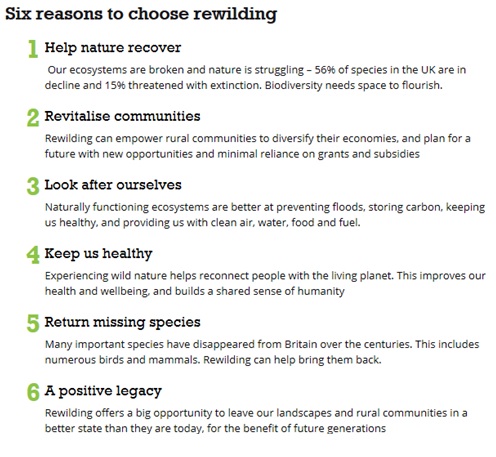In the woods, we undertook some ‘Forest Management’, cutting Ivy off the trunks of trees to prevent further growth. But why? This small plant has the potential to cause big problems…
Ivy climbs up trees as it seeks to reach sunlight. Its presence can be very beneficial, providing a source of food for some birds and insects and shelter for small mammals. However, Ivy can lead to safety concerns. Not only can it hide dangerous structural issues from sight, the Ivy leaves can also act as sails, meaning trees are at risk of falling in strong winds.

Can you use your scientific understanding to explain the reasons why this sequence of events might occur?
This leaves me questioning…If there are both advantages and disadvantages to aspects of nature such as Ivy, how do we know when it’s right to intervene?
This led me to researching the concept of ‘Rewilding’ – perhaps the opposite of ‘Forest Management’, where nature is left to take care of itself, allowing natural processes to shape landscapes and habitats. It’s based on key principles including:
- People, communities and livelihoods are key
Rewilding involves people making a choice to manage the land with minimal human impact. Sustainable harvesting can mean natural ecosystems are kept healthy. People can experience true wild nature and receive health and social benefits as a result.
- Natural processes drive outcomes and work at nature’s scale
Missing species may be introduced to restore the variety of natural processes and ecosystems but other than that, nature goes wherever it takes itself.
- Benefits are secured for the long-term
Rewilding requires collaboration between communities so that nature can be protected for future generations.

Have a look at this video of a rewilding project that has taken place in West Sussex!
https://www.youtube.com/watch?time_continue=81&v=ikNVLbRKI_8
” Rewilding is about letting nature do what it does best…on its own! All plants and animals have some purpose, even a weed like thistles can provide food for caterpillars and butterflies and when this happens, we don’t have to worry about the thistles taking over! Allowing nature to take care of itself means less work for me as a groundsman and in the long term, can actually lead to much better results! “
Joel van der Wijk – Groundsman at Ashburnham Place
References
Knepp Wildland. (No Date) Knepp Wildland
Patch, D. (2004) Trees in focus
Rewilding Britain. (No Date) Rewilding Britain
TreesAlive. (No Date) Photograph of tree with ivy
Woodland Trust. (No Date) Does Ivy kills trees?
